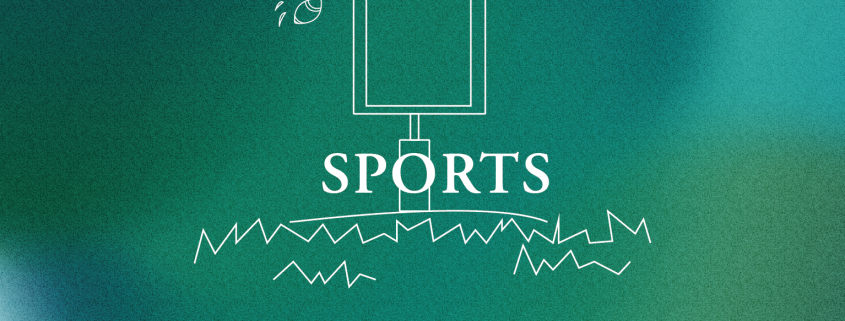Iced out: A beginner’s guide to hockey slang
Have you ever overheard a couple of hockey players conversing with each other and had no clue what they were talking about? Hockey is one of the most unique sports on the planet, so it’s only fitting it would be accompanied by its own distinct vernacular. As a New England transplant who grew up around the rink, I feel as if it’s my duty to bring some puck lingo to the West Coast. The next time you find yourself in a conversation with a hockey player or avid fan and feel like you need a translator, just refer to this dictionary and you should be able to hold your own.
“Bender”: Now this one you might be familiar with, as it’s an essential piece of hockey vocabulary. The noun refers to a player whose ankles bend when they skate. It is often accompanied by a mention of ankle tape, which is used by some players to offer a little extra support. This insult is more often used to trash talk opposing players or by teammates poking fun at one another. Hockey players’ ankles are not supposed to bend much, so it’s generally not a term you want to hear with your name attached.
“Duster”: This is another crucial noun you need to know if you’re going to try to talk about hockey. Duster refers to players not seeing much ice time and collecting dust on the bench. Most often used amid trash-talking and friends joking around, a player who is dusty is someone who is not too skilled and therefore receives little playing time. If a hockey savant is ever teasing you, just pull this one out of your back pocket and watch them scramble for a response.
“Yard Sale”: This phrase might not be used on the ice itself too often, but it usually comes up in an NHL broadcast every couple of days. It can be used as a noun or adjective and describes a particularly hard hit. Think of it as the hockey equivalent of a hit stick in football. Though a hit to this extent rarely occurs, a true yard sale is when a player gets checked so hard that their gloves, stick or helmet go flying and lay out on the ice like a yard sale display.
“Beauty” or “Beautician”: Now, this is something you definitely want to be called. Beauticians are adored by teammates and fans alike. Not only is a beauty a talented player on the ice, but they also have an electric personality. They are often hilarious individuals and are usually sporting the premier “flow” (long hair flowing out of one’s helmet) on their squad.
“Flamingo”: A flamingo denotes a very specific play that happens during the course of a game. Blocking shots is an essential part of hockey, and not just for goalies. One of the prime ways to earn respect from your teammates and coaches as a player who’s willing to do the dirty work is to step in front of a shot as a position player. When someone is in place to block a shot and lifts their leg to avoid getting hit by the puck, that is a flamingo. Aptly named for its one-legged pose, a flamingo is something your coach will call you when you get back to the bench and they’re upset you didn’t take one for the team. Don’t be a flamingo, block the shot.
“Plumber”: A plumber is in the opposite vein of a flamingo. Plumbers are not the most skilled members of the team, but are highly respected nonetheless. Plumbers, like their moniker, do all the dirty work. They go into the corners, block shots and most importantly, constantly hustle. Being called a plumber is an honor, as it’s recognition for tasks that don’t show up on the stat sheet and are largely unheralded by fans.
Now to finish out, here are some quick hitters that don’t need as much explanation as the aforementioned vocabulary.
“Dangle”: A dangle is a move or deke performed by a player with their stick that fakes out an opposing player or goalie.
“Filthy”: This is an adjective that denotes a particular impressive dangle, shot or play as a whole. Synonyms are “yucky,” “disgusting” and “nasty.”
“Apple”: An apple is simply an assist on another player’s goal.
“Gongshow”: This fun word is uttered when a game is out of control and there’s an abundance of goals.
“Sieve”: Similar to a sieve or strainer used for pasta, this is a goalie who lets numerous pucks past them.
“Gino”: Maybe the most important word on this list, a gino is a goal. Always referring to goals as ginos is an easy way to seem like you know what you’re talking about during a hockey game.
That was a crash course in the language of hockey players everywhere. Some of it still may sound like gibberish, but the more you practice, the more you’ll see it’s a very fun dialect to speak. We’ll learn some more in future installments, but that should be enough to carry you through any hockey conversation and help you understand future editions of this column.
Kyle Frankel is a sophomore writing about the unique elements and storylines of ice hockey in his column “Iced Out.”

